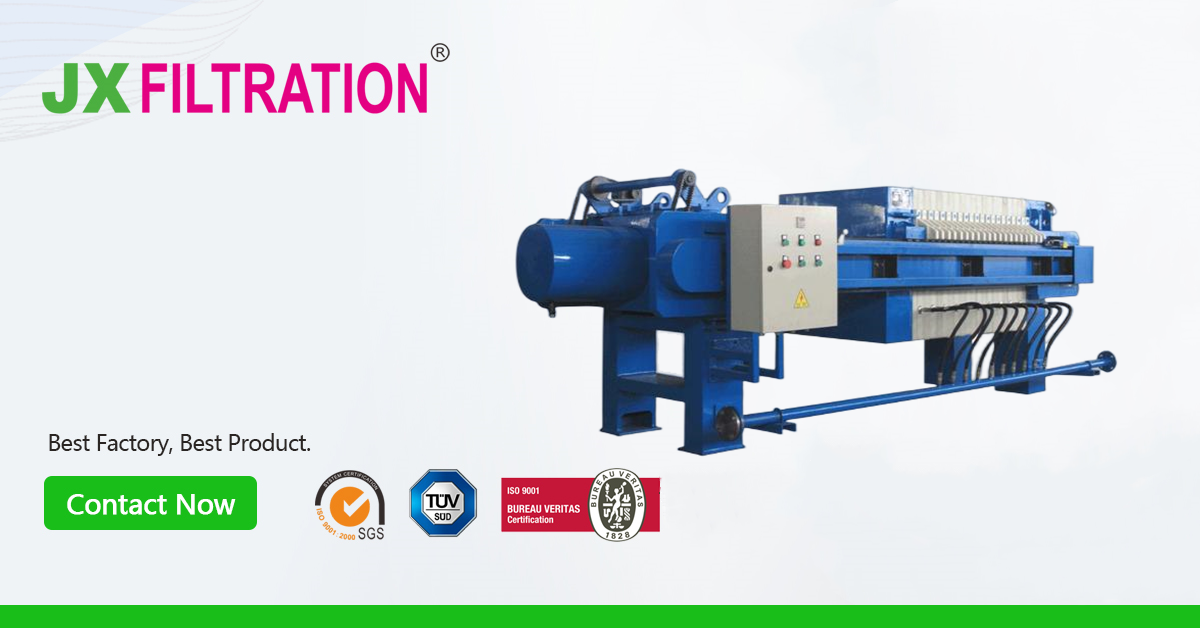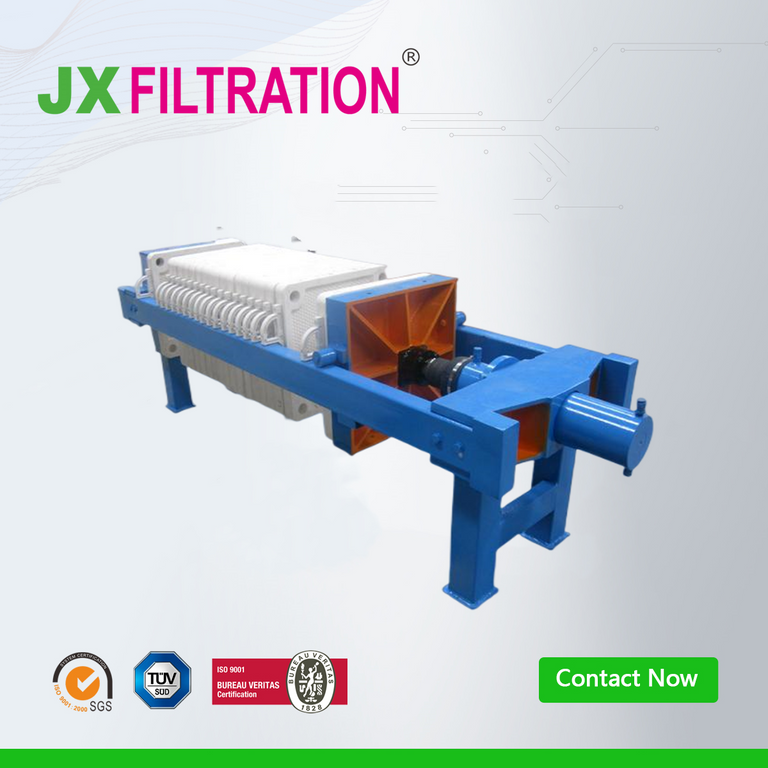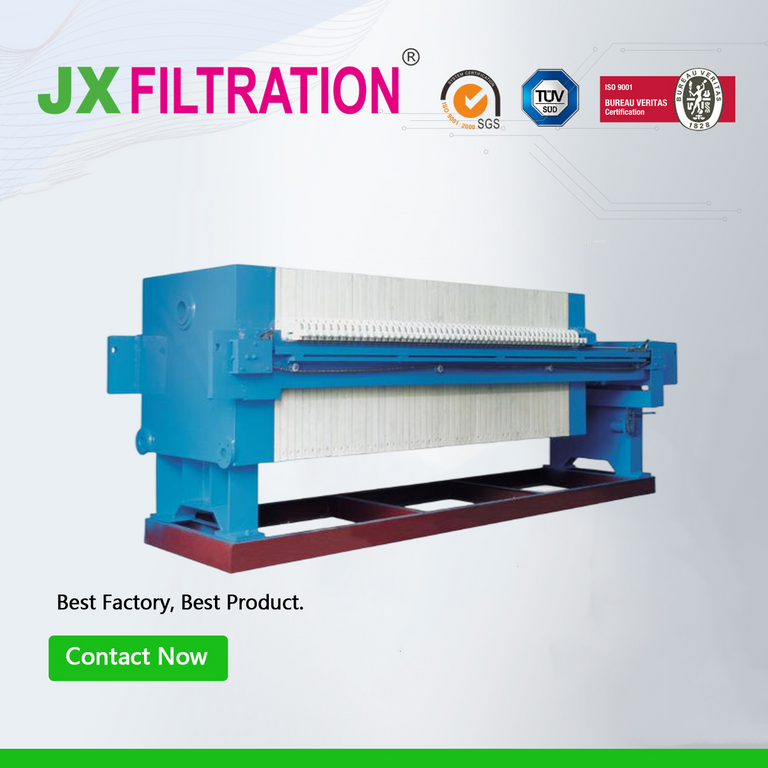What is a Plate and Frame Filter Press?
The Plate and Frame Filter Press is a mechanical device first used in chemical dewatering. Although Plate and Frame Filter Presses are generally used for intermittent operations with significant infrastructure investment and lower filtration capacity, they are widely applied in wastewater treatment plants due to their advantages such as strong filtration driving force, high solid content in filter cake, clear filtrate, high solid recovery rate, and low consumption of conditioning agents. In wastewater treatment, the Plate and Frame Filter Press is specifically designed for sludge treatment, aiming to press-filter the remaining sludge for the formation of large filter cakes (mud cakes) for easy removal and disposal.

Principles of Plate and Frame Filter Press:
The Plate and Frame Filter Press consists of five main components: filter plates of the press, hydraulic system, filter press frame, filter plate transfer system, and electrical system. The working principle of the Plate and Frame Filter Press is relatively simple. The press applies hydraulic force to tighten the plate and frame set. The settled sludge enters from the center and distributes between each filter cloth. Due to the tight pressure of the plate and frame, the sludge cannot overflow. Under the high pressure of the screw pump and diaphragm pump, the water in the sludge infiltrates through the filter cloth, flows into the return pipe, while the mud cake remains in the chamber. Afterward, the pressure is released, the filter plate is pulled apart, and the mud cake falls down by gravity. It is then removed by a truck. Therefore, the filtration process is the final step in wastewater treatment.
The Plate and Frame Filter Press is suitable for suspensions with large compressibility of filter cake or nearly incompressible. The appropriate solid particle concentration of the suspension is generally below 10%, with operating pressure typically between 0.3 to 0.6 megapascals, and it can reach 3 megapascals or higher for special cases. The filtration area can be adjusted by increasing or decreasing the number of plates and frames used. The frames are usually square, with an internal side length of 320 to 2000 millimeters, frame thickness of 16 to 80 millimeters, and filtration area of 1 to 1200 square meters. The plates and frames are tightened using manual screws, electric screws, or hydraulic methods. Plates and frames are manufactured using materials such as wood, cast iron, cast steel, stainless steel, polypropylene, and rubber.
Any Requirements, Contact Us Now!
Kris
Email/Teams: kris@filtrationchina.com
Mobile/Whatsapp/Wechat: +86 18980776200


